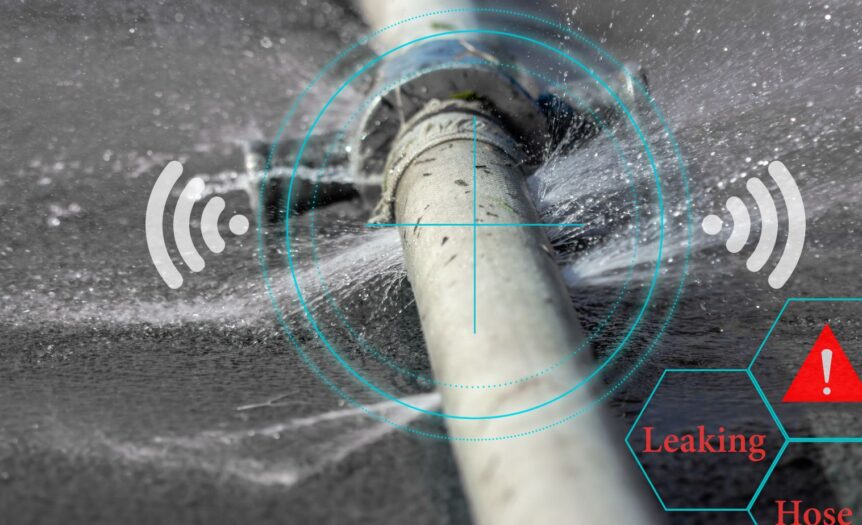Home water flow sensors are quite important in water consumption and leakage detection within your plumbing system. Keeping your sensor in great condition and taking proper calibration means a better reflection of its accuracy and efficiency in water saving and leak prevention. It will extend the lifespan of this sensor through routine maintenance and allow it to provide you with more accurate readings that prevent the occurrence of water waste, which could also be costly due to the potential damage it can cause to your home. Like all appliances in your house, they need some tender loving care to ensure that they work just right and help prevent your home from further damage caused by water.
Cleaning Your Water Flow Sensor
Water flow sensors have a tendency to get jammed up over time due to debris, sediment, or mineral deposits while working in households that have hard water. The sediment and debris buildups can block the sensor, thereby inhibiting appropriate measurements of the water flow that may give faulty readings. Cleaning your sensor will help you keep it working smoothly. First, turn off the water supply; remove the sensor from the pipe. Then, using a soft brush or cloth, delicately remove debris and buildups that have formed over or around components of the sensor. Clean with a soft cloth or brush; harsh chemicals may be damaging to the sensor and affect its readings. After cleaning, reinstall the sensor with care and then turn the water on to check for leaks. Once the sensor is reinstalled, learning how to use a floor scrubber properly can help maintain your floors, ensuring thorough cleaning without causing any damage to the surface.
Inspection for Deterioration
Along with cleaning, it is also a paramount routine check on your water flow sensor for its wear and tear. With time, sensors start showing signs of deterioration, such as corrosion, cracked housing, or damaged wiring.

Any one of these may affect the accuracy of the reading of the sensor, or malfunctioning of the device itself. This regular inspection of the sensor lets you find any potential issues before they get bigger. If any of those sensor parts are beyond repair, then perhaps it is already time to replace the sensor in order to have better water flow monitoring.
How to Calibrate Your Water Flow Sensor
Calibration is an important means by which your water flow sensor can indeed give out accurate data. Sensors, over a period of time, may drift out of calibration due to various factors, such as changes in water pressure and temperature, and maybe even because of aging components. Calibration: This varies by different manufacturers, so check the instructions for your model and follow what they say. This usually involves taking a sensitivity adjustment to make the sensor read true water flow rates. You may have to run the sensor’s output against a known water flow rate or volume to ensure that it is accurate. Once you’ve done the actual calibration, run a few tests to confirm that everything is working right and that the data can be relied upon.
Regular Testing of Your Sensor
In addition to just regular maintenance and calibration, periodic testing of your water flow sensor will go a long way in ensuring things stay within specification. First, you want to check that the sensor correctly detects water flow in various ranges, from just a trickle-up to larger volumes. If you notice more inconsistencies in the readings or if a sensor will not be able to record the changes in the flow, that sensor probably needs recalibration or other servicing. Regular testing provides early detection. This way, your water flow sensor stays one of the functional pieces attached to the plumbing system in your home.
Replacing the Sensor When Needed
Of course, even with regular maintenance and calibration, sensors do wear out or become obsolete over time. If you feel like your sensor, in general, is giving you incorrect readings, malfunctioning, or just not detecting the passage of water, then it may well be time for a change. Newer models boast better technology and reliability, so it might be time to look into an upgrade.

For instance, the FloLogic water shut off system combines advanced water-flow detection with automatic shut-off functions to add an additional layer of protection to your home plumbing system by virtue of its power to stop leaks immediately after they have been detected. As a matter of fact, moving up to a more advanced system can improve the way your home manages and regulates water, saving you from costly water damage.
Professional Help
While some house owners may take to basic maintenance and calibration themselves, others might want professional assistance with regard to these matters. These respective plumbers or technicians experienced in handling water flow sensors can grant professional assistance on the issues of maintenance, calibration, and even upgrading your system. Unless you are not certain that your sensor is in good condition or you have complex repairs beyond your reach, reaching out to a professional will mean that the job is well done. Moreover, the experts will be able to advise you on the best settings for the water flow sensor regarding your household needs.
Good maintenance and calibration will significantly contribute to the long-term operation and accuracy of a water flow sensor. Quite often, regular cleaning and inspection are combined with calibration and testing to let your sensor further measure water consumption and possible development of leaks. The good thing is that when the time comes, it means replacing it with one even higher in innovative design for even further protection for your home. By following these steps, you ensure your water flow sensor remains an invaluable tool in protecting your home from water damage and conveys at least its usefulness in helping you save water.








